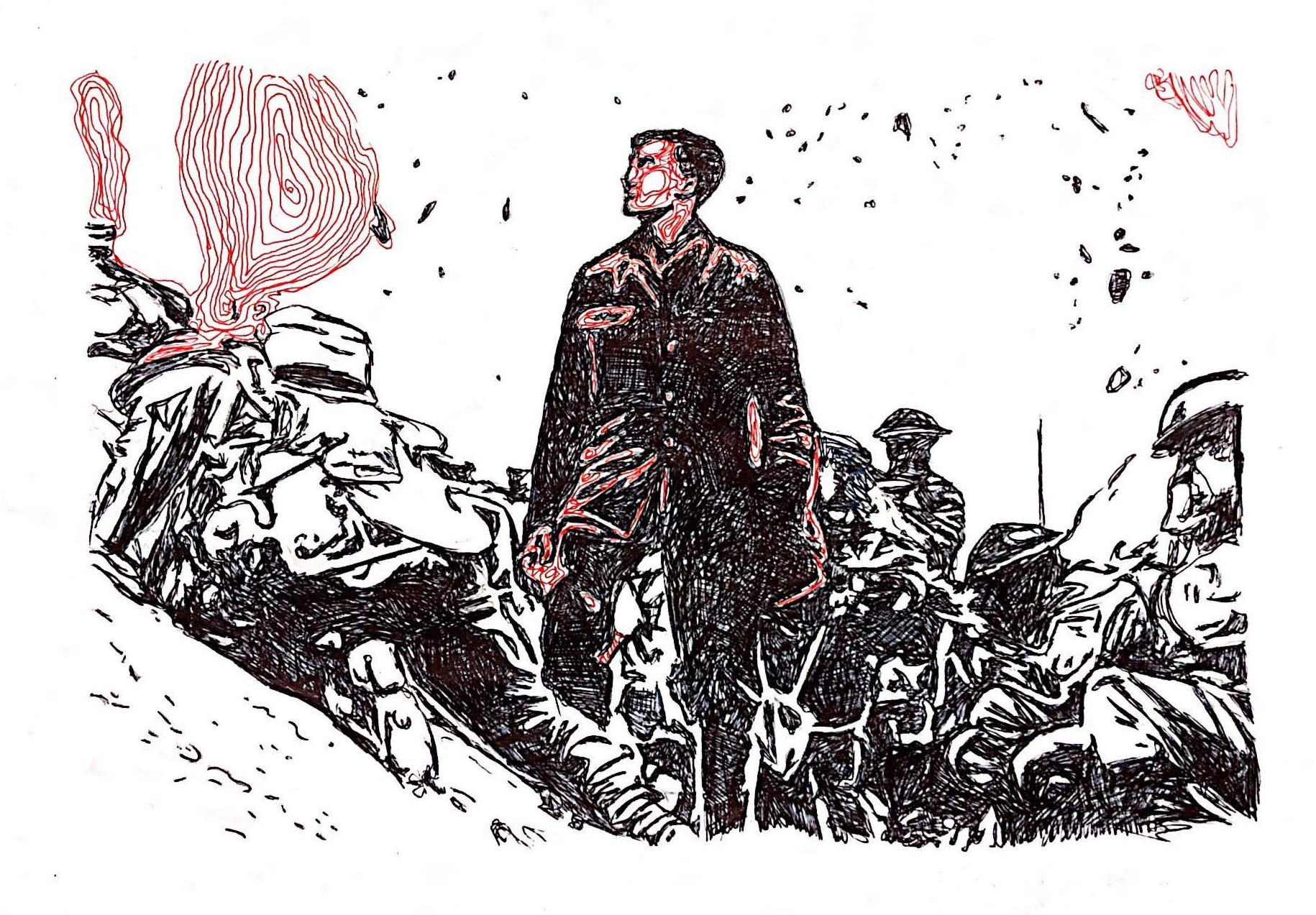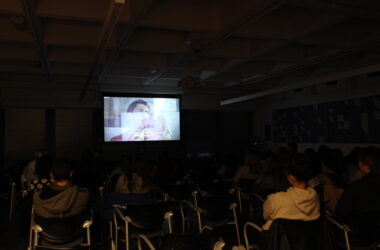Grim, realistic, elaborate, astounding, and thrilling. These five adjectives are what makes Sam Mendes’ 1917 a truly great film. Exploring the harms and horrors of war, 1917 redefines the military genre not as a measly backdrop for an entertaining action movie, but as a recognition of the ultimate sacrifice paid by soldiers. Inspired by the events of Mendes’s grandfather’s life, the film is a candid representation of the tragic moments faced by many young men. In a market which seems oversaturated with action movies glorifying violence, 1917 stands out as a revolutionary film thanks to its storytelling, score, and scene design that set the standards for others to follow.
1917 introduces the audience to Lance Corporal Blake (Dean-Charles Chapman) and his companion Schofield (George MacKay) as two ordinary soldiers who are about to face the most paramount task of their duties: They traverse some of the bloodiest battlegrounds to deliver a military order. MacKay depicts genuine desperation as he stumbles through a field of soldiers, unknowingly marching to their demise in a captivating performance that rivals that of the big-name actors also present in the film. The cast and makeup crew perform the exemplary task of portraying the horrors that arise from the aftermath of a battle without exaggerating the amount of blood and gore present in the scene, mostly presenting the pale cadavers of civilians and combatants alike. Where 1917 is strongest, however, is in its ability to place the audience side by side with the characters, through Roger Deakins’ captivating cinematography that creatively binds one scene with another.
At first glance, it seems as though 1917 is comprised of two continuous takes. However, crafty cinematography creates this illusion, for the precision of each transition contributes to the overall effect of the film. The lengthy set pieces, such as a run-down village or vibrant green plains, call for extensive coordination off-screen to transition a camera from the hands of a crew member to the arm of a crane. This effectively demonstrates the scope of the challenge faced by the two soldiers, as they must weave through hostile armies to deliver the message of utmost importance.
Fixed on portraying the aftermath of a battle, 1917 falls victim to some prolonged moments of stillness which appear to be mere filler for a film that has run out of stories to tell. Such scenes do not contribute to the overall story arch, and are a missed opportunity for the much-needed character development. Throughout the narrative, the two soldiers share some stories from their personal lives, from nights with old friends to moments spent with loved ones. However, not much time was dedicated to such conversations, resulting in a lack of personal connection to the characters. Nonetheless, these moments create great tension, with a phenomenal score that leaves the viewer anxious for what is to come, despite not a single bullet being fired.
1917 goes beyond being a mere action drama: Its fluid cinematography and editing take away obvious cuts and to create greater immersion. The film took the run-of-the-mill war story and turned it into a unique experience through stunning visuals, in a feat truly deserving of over half a dozen Oscar nominations and a visit to the nearest movie theatre.









great review of an outstanding movie